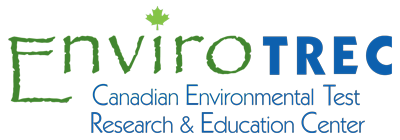Originally published by Graham Warwick for Aviation Week & Space Technology on April 18th 2016
Canada’s climate and reliance on aviation has established the country as a center for icing research. Its latest achievement is development of two ice-particle detection technologies the National Research Council of Canada (NRC) says are ready to be transitioned to industry.
The ultrasound ice accretion sensor is designed to combat the recently emerged threat from high concentrations of ice particles at high altitude, which can cause ice to accumulate rapidly inside an engine and lead to thrust rollback or flameout. The sensor does not have to be placed within the environment being monitored, avoiding risk of damage.
The ice particle probe, meanwhile, flush-mounts on aircraft or engine surfaces and detects particles by measuring changes in the electrical characteristics of the atmosphere around the aircraft when flying in a high-altitude ice-crystal environment. Both sensors are at technology readiness level 6 and ready for industry use, says the NRC.
Aircraft icing resulting from liquid water in clouds has been a concern for decades, but more recently research has been focused on the risks related to ice crystals in clouds. Invisible to airborne weather radar, even in high concentrations, ice crystals can clog engines and block pitot tubes.

The ultrasound sensor is built into the outer surface of the engine part. Two 1-mm-dia. wires that connect to the sensor are not pictured. Credit: National Research Council of Canada.
The NRC says no reliable sensor exists that can provide early indication of ice accretion, a gap addressed by its ultrasound device. The nonintrusive, patchlike sensor is small, thin, lightweight and low-power. Using ultrasound, it acts as both speaker and microphone, sending an acoustic wave through the skin or wall that is reflected back by any accumulated ice, providing data about conditions on the other side.
Unlike most other sensors, says the NRC, the device does not have to be placed within the environment being measured. It can be applied to a surface of an engine or aircraft component that is not exposed, eliminating the risk of it being damaged by ice or becoming detached and going through the engine.
“Knowing where icing is likely to occur in an engine can be narrowed down,” says Dan Fuleki, icing group project manager. “So when we positioned this sensor in the right locations on the other side of the wall from the flow, we were able to determine that ice accretion was happening.”
In November 2015, under the NRC’s agreement with NASA to collaborate on icing research, the ultrasound sensor was tested in partnership with Honeywell and the Ice Crystal Consortium, which provided a test engine known to roll back to idle in certain icing conditions.
The sensor was tested at a simulated 30,000 ft. in a real icing environment. A total of 12 sensors were installed in various locations of interest within the engine, which was tested in the Propulsion Systems Laboratory at NASA Glenn Research Center.

The ice particle probe is a nonintrusive sensor for ice-crystal detection at high altitudes. Credit: National Research Council of Canada
“The initial results are very positive,” says Fuleki. “We have been able to detect ice accretion in an actual engine icing environment, and have also seen that this sensor has sufficient sensitivity to distinguish between severe and light accretions and, in effect, to measure the accretion intensity.”
One sensor is sufficient to detect ice but, due to their small size, weight and power, the NRC says an array can be installed—as was done in the altitude-test engine—to provide details on the magnitude of ice coverage.
The ice particle sensor, meanwhile, was developed and tested under the European Union’s Airbus-led High-Altitude Ice Crystal project. Small and lightweight, with low power per consumption and drag, the flush-mounted probe was one of two devices selected from six candidate ice-detection technologies to be evaluated for flight testing.

The particle-detection probe is pictured installed on the NRC’s Convair 580 research aircraft. Credit: National Research Council of Canada
The probe has been exposed to more than 750 hr. of ice-crystal altitude tunnel testing and completed more than 140 hr. of flight tests in four research campaigns on NRC and Airbus aircraft. The probe has been verified in a range of natural ice crystal and liquid water conditions, NRC says, in geographic areas including the mid-latitudes around Ottawa and equatorial latitudes, at altitudes above 40,000 ft.
The probe works by measuring the electric charge on particles, ice and liquid water charging to different levels. “Looking at all the tunnel and flight testing; the amount and quality of data is exceptional,” says Fuleki. “The probe’s performance impressed Airbus so much that they requested it be kept on the [Airbus] A340 for its next flight campaign to detect and measure supercooled liquid water content.”
